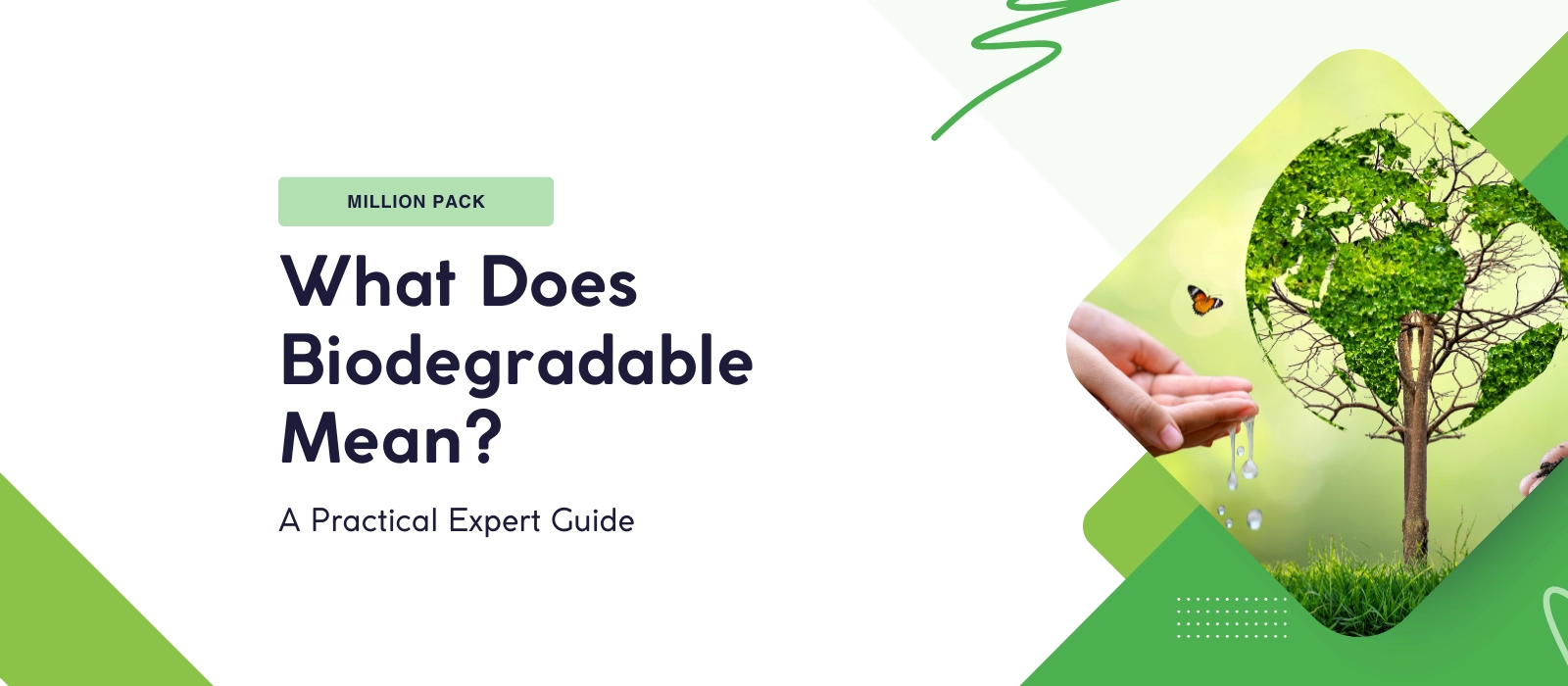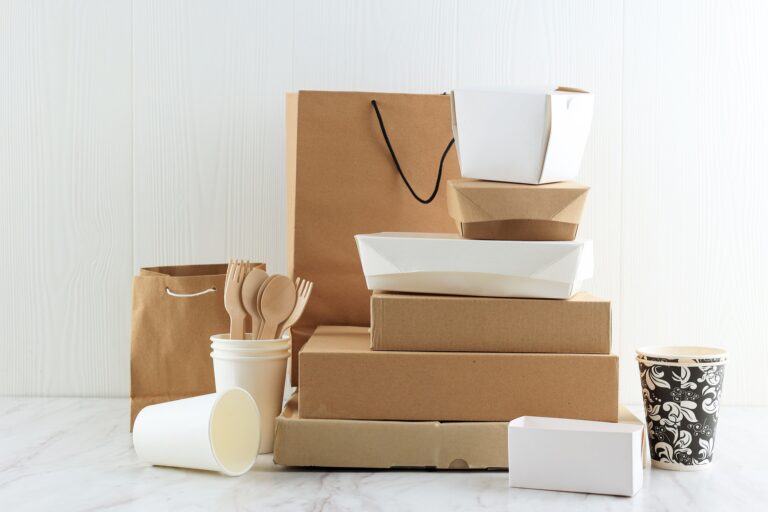In recent years, environmental concerns have become more pressing, with plastic pollution topping the list of global issues. Every year, millions of tons of plastic waste are dumped into the oceans, harming marine life and polluting ecosystems. As consumers and industries alike seek solutions, one word has become increasingly important: biodegradable.
But what exactly does “biodegradable” mean? How can a material break down naturally without leaving harmful residues? Is it truly the solution to our environmental crisis? In this article, we’ll explore the science behind biodegradable materials and their role in combating pollution.
From biodegradable packaging to eco-friendly alternatives in our everyday lives, we’ll discuss what makes these materials effective, the factors that influence their degradation, and the potential challenges they face. By the end of this guide, you’ll have a clear understanding of what biodegradable means and why it matters for a more sustainable future.
What Does Biodegradable Mean?
The term biodegradable refers to the ability of a material to break down naturally through the action of microorganisms, such as bacteria, fungi, and algae. These organisms consume the material, breaking it down into simpler, non-toxic components like water, carbon dioxide, and organic matter. Essentially, biodegradable materials undergo a natural process of decomposition without leaving behind harmful substances that can pollute the environment.
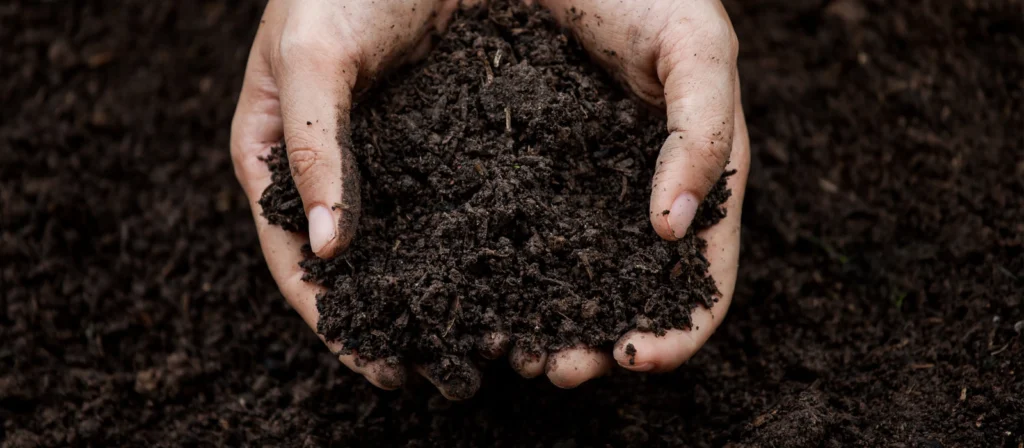
Biodegradability is often confused with the terms degradable or compostable, but these terms are not interchangeable. While “degradable” simply refers to materials that break down over time, biodegradable materials decompose in a way that is environmentally friendly. On the other hand, compostable materials break down into nutrient-rich organic matter that can be used to enrich soil, but they often require specific conditions, such as higher temperatures and moisture, to fully decompose.
Understanding the process of biodegradation is essential because it informs the design of eco-friendly products. By replacing harmful, non-biodegradable materials with biodegradable alternatives, we can help reduce the impact of waste on our ecosystems. The more we incorporate biodegradable materials into everyday life, the less we rely on plastics and other substances that take hundreds of years to decompose, contributing to long-term environmental damage.
The Biodegradation Process: How Does It Work?
Biodegradation is a natural, biological process where organic materials are broken down into simpler substances by microorganisms. This process is vital for the recycling of organic matter in ecosystems, ensuring that nutrients are returned to the soil and water to support life. To better understand how biodegradation works, it’s important to explore the stages involved and the factors that influence this process.
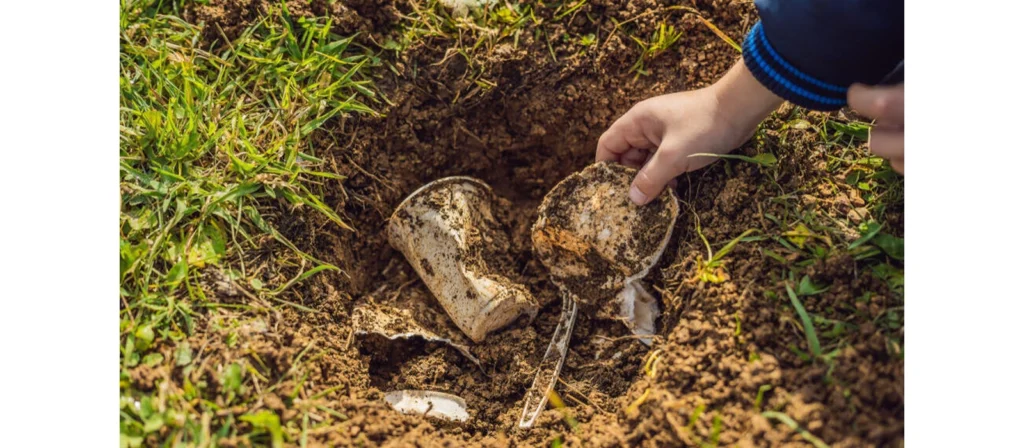
Microbial Action in Biodegradation
The primary agents responsible for biodegradation are microorganisms, including bacteria, fungi, and algae. These microbes feed on organic materials, breaking them down into smaller components. As the microorganisms consume the material, they release enzymes that help break the material into simpler compounds, such as sugars, fatty acids, and amino acids. This process occurs in various environments, from soil and compost to water bodies, depending on the material’s nature and environmental conditions.
Stages of Biodegradation
Biodegradation is typically broken down into three distinct stages:
- Hydrolysis: In this initial stage, microorganisms secrete enzymes that break down complex organic compounds into simpler molecules, such as sugars and fatty acids. For example, the cellulose in plant-based materials may be broken down into glucose.
- Fermentation: The smaller molecules are then fermented by microorganisms into simpler compounds. This stage often results in the production of gases like methane and carbon dioxide.
- Mineralization: The final stage of biodegradation involves the complete breakdown of the remaining materials into inorganic compounds, such as water, carbon dioxide, and minerals. These components are then absorbed back into the ecosystem, enriching the soil and supporting plant growth.
Factors Influencing Biodegradation
Several environmental factors can significantly affect how quickly and effectively a material biodegrades:
- Temperature: Warmer temperatures accelerate microbial activity, speeding up the breakdown process. In cold environments, biodegradation may occur at a much slower rate.
- Oxygen Availability: Oxygen is essential for aerobic microorganisms, which require it to break down organic matter efficiently. In anaerobic environments, where oxygen is limited, the process is slower, and different microorganisms are involved.
- Moisture Levels: Adequate moisture is crucial for the activity of microbes. Dry conditions can slow down or even halt biodegradation, while excessive moisture can lead to the growth of harmful bacteria or mold that may slow the process.
- Material Composition: The type of material also plays a significant role. For instance, plant-based materials, like paper and wood, biodegrade much faster than synthetic polymers like plastic, which can take hundreds of years to decompose fully.
Understanding these stages and factors provides insight into how different biodegradable materials break down and how we can optimize their use for environmental benefit. The natural process of biodegradation is essential to the Earth’s nutrient cycle, and by fostering it through responsible material choices, we can reduce our reliance on polluting, non-biodegradable substances.
Understanding the Key Characteristics of Biodegradable Materials
While biodegradability is a key factor in determining a material’s environmental impact, not all biodegradable materials are created equal. Several characteristics influence how quickly and effectively a material will break down in the environment. Understanding these features can help consumers, industries, and policymakers make more informed decisions about which materials to use and how to manage waste.
Material Structure
The structure of a material plays a significant role in its biodegradability. Organic materials such as plant fibers, paper, and wood have a natural, porous structure that is more easily broken down by microorganisms. These materials provide ample surface area for microbes to attach and begin the decomposition process. In contrast, synthetic materials like plastic often have a more complex and stable structure, making them much harder for microbes to break down.
For example, while plant-based plastics might be biodegradable, they may require specific conditions (e.g., higher temperatures or specific microbial environments) to degrade properly. On the other hand, materials like paper and cotton break down more readily in typical environmental conditions.
Polymer Composition
Many biodegradable materials are composed of polymers—long chains of repeating molecules. In biodegradable polymers, these chains are designed to be broken down by microbial activity. The composition of these polymers affects how quickly they will degrade. Polymers derived from natural sources, such as starch or cellulose, are generally easier for microorganisms to break down compared to synthetic polymers like polyethylene.
In recent years, researchers have focused on developing bio-based polymers that retain the useful properties of conventional plastics but break down more quickly in natural environments. This includes materials like polylactic acid (PLA), which is made from renewable resources like corn starch and is compostable under the right conditions.
Environmental Conditions
As mentioned in the previous section, the surrounding environment plays a crucial role in the biodegradation process. Certain materials may require specific environmental conditions, such as higher moisture levels, warmer temperatures, or greater oxygen availability, to break down effectively.
For instance, biodegradable plastics made from materials like PLA typically need industrial composting facilities to degrade properly, where they are exposed to high heat and moisture. In contrast, organic waste, like food scraps and paper, can break down much faster in natural environments like soil or compost heaps.
Even materials labeled as biodegradable may not break down efficiently if disposed of in the wrong environment. For example, biodegradable items in a landfill often break down very slowly due to limited oxygen and moisture, leading to a much longer degradation time.
Additives and Coatings
Many biodegradable materials are enhanced with additives or coatings that affect their degradation rate. For example, some biodegradable plastics are mixed with other substances to improve their durability or shelf life. These additives can interfere with the breakdown process and slow down biodegradation.
Additionally, coatings or treatments added to biodegradable materials to make them more water-resistant or durable can also hinder microbial access, preventing or delaying the degradation process. It’s important to be aware of such additives when choosing biodegradable products, as they may not be as environmentally friendly as they appear.
Microbial Degradation Rate
Different biodegradable materials are subject to different rates of microbial degradation. Materials like paper and food waste decompose relatively quickly, typically within a few weeks to a few months, depending on environmental conditions. However, some biodegradable plastics and polymers may take several years to degrade, especially in conditions that are not optimal for microbial activity.
For example, bioplastics like PLA and PHA (polyhydroxyalkanoates) are often marketed as biodegradable, but they still require specific conditions (e.g., composting facilities) to break down efficiently. In natural environments, these materials can persist for years before fully degrading, leading to potential environmental impact if not properly disposed of.
Biodegradable vs. Compostable: Clearing Up the Confusion
When it comes to eco-friendly materials, the terms biodegradable and compostable are often used interchangeably, but they refer to distinct concepts. Understanding the differences between these two terms is crucial for making environmentally conscious choices.
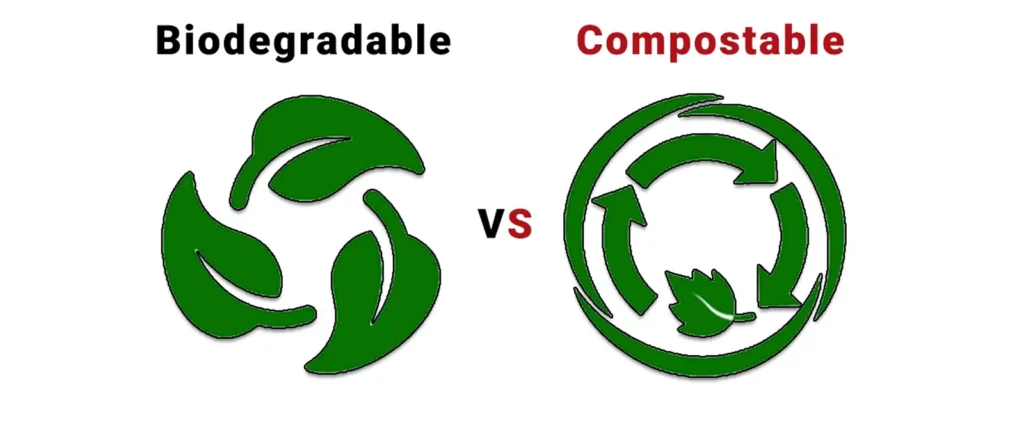
What is Compostable?
A compostable material is one that breaks down into nutrient-rich organic matter in a composting environment. Unlike biodegradable materials, which can decompose in a wide range of natural conditions, compostable materials require specific conditions to break down effectively. These conditions typically include high temperatures, moisture, and the presence of microorganisms that thrive in composting environments.
The key difference between compostable and biodegradable materials lies in the final result. Compostable materials, when broken down, create compost, which is a valuable resource for enriching soil. Compost improves soil structure, water retention, and provides essential nutrients to plants. In contrast, while biodegradable materials break down into simpler compounds, they do not necessarily create compost that benefits the soil.
Biodegradable vs. Compostable: The Key Differences
- Breakdown Conditions:
- Biodegradable materials can break down in various natural environments, including soil, water, or landfill, often without needing specific conditions.
- Compostable materials require specific conditions (e.g., high heat, moisture, and microbial activity) found in industrial composting facilities or well-maintained home compost bins.
- Decomposition Time:
- Biodegradable materials can take anywhere from a few weeks to several years to break down, depending on environmental conditions and the material type. For example, food scraps decompose quickly, but plastic alternatives may take decades to degrade.
- Compostable materials break down more quickly, usually within 90 days under optimal conditions. The time frame can vary based on the material’s composition and composting environment.
- Final Result:
- Biodegradable materials may break down into carbon dioxide, water, and organic matter, but they do not necessarily contribute to the enrichment of the soil.
- Compostable materials decompose into compost, which enriches the soil, improving its structure and nutrient content.
Why It Matters
Understanding these differences is crucial when it comes to disposal. Many biodegradable materials, such as bioplastics, are often marketed as eco-friendly, but they can still take years to break down in a landfill or marine environment. On the other hand, compostable materials, when disposed of correctly in industrial composting facilities, can quickly decompose into valuable organic matter that helps reduce waste and benefits the environment.
Consumers need to be aware of the specific requirements for proper disposal. For example, compostable products should be taken to a composting facility, as they will not break down properly in a landfill. In contrast, biodegradable materials may break down over time but often do so much more slowly, especially in environments lacking the necessary microorganisms or oxygen.
The Role of Certification
Because the terms “biodegradable” and “compostable” are not always regulated or standardized, it’s important for consumers to look for certification labels. The BPI Certification (Biodegradable Products Institute) and US Composting Council’s Seal of Testing Assurance (STA) are among the most trusted certifications for compostable materials. These certifications ensure that the products meet the necessary standards for composting in industrial or home settings.
Biodegradable vs. Compostable: A Quick Comparison
To make the differences between biodegradable and compostable materials easier to understand, here’s a quick comparison in table format:
| Aspect | Biodegradable | Compostable |
|---|---|---|
| Breakdown Conditions | Breaks down in various natural environments (soil, water, landfill) | Requires specific conditions (high heat, moisture, microbial activity) |
| Decomposition Time | Can take weeks to years, depending on material type and environment | Usually decomposes within 90 days under optimal conditions |
| Final Product | Breaks down into simpler compounds like carbon dioxide and water, but doesn’t enrich soil | Breaks down into compost, which enriches soil and provides nutrients |
| Disposal Requirements | Can decompose slowly in landfills, but may take a long time | Needs proper composting facilities to break down effectively |
| Environmental Impact | Can contribute to waste if not properly managed | Creates valuable organic compost for sustainable agriculture |
Examples of Biodegradable Materials in Everyday Life
Biodegradable materials are increasingly being used in various industries to reduce the environmental impact of products we use daily. By choosing biodegradable alternatives, consumers can make a significant contribution to minimizing waste and pollution. Let’s take a look at some common examples of biodegradable materials and how they are used in everyday life.
Biodegradable Packaging
One of the most significant areas where biodegradable materials are making a difference is in packaging. Traditional plastic packaging contributes to a massive amount of waste, much of which ends up in landfills or oceans. Biodegradable packaging offers a sustainable alternative, breaking down over time without leaving harmful residues.
Examples include:
- Biodegradable food containers: Made from materials like cornstarch or sugarcane pulp, these containers break down more quickly than plastic and can be composted after use.
- Biodegradable wrappers and bags: Many companies now use biodegradable films and bags made from materials such as polylactic acid (PLA), which are compostable and safe for the environment.
These alternatives reduce the reliance on single-use plastics, contributing to less pollution and promoting sustainability in packaging.
Eco-Friendly Disposable Products
Another area where biodegradable materials are gaining popularity is in disposable products. From cutlery to straws and cups, biodegradable alternatives are helping reduce the environmental damage caused by disposable plastic products. These biodegradable items typically break down much more quickly than their plastic counterparts, helping to reduce waste.
Examples include:
- Biodegradable plates, cups, and cutlery: Made from plant-based materials such as bamboo, sugarcane, or palm leaves, these products can decompose within a short period after disposal, unlike plastic alternatives that can take hundreds of years to break down.
- Biodegradable straws: Made from materials like paper or cornstarch, biodegradable straws provide an environmentally-friendly alternative to plastic straws, which are among the most common ocean pollutants.
These eco-friendly alternatives are especially popular for events, festivals, and restaurants looking to reduce their environmental footprint.
Biodegradable Cleaning Products
The cleaning industry has also embraced biodegradable materials, with many companies offering biodegradable detergents, soaps, and cleaning wipes. These products are made from natural ingredients that break down more easily in the environment, reducing the harmful chemicals released into waterways.
Examples include:
- Biodegradable cleaning wipes: Made from natural fibers and plant-based ingredients, these wipes break down after use without leaving harmful residues behind.
- Eco-friendly laundry detergents: Many detergents now use biodegradable surfactants, which are easier for microorganisms to break down in the environment compared to traditional detergents, reducing water pollution.
Biodegradable cleaning products are a great option for those looking to reduce their environmental impact while keeping their homes clean.
Biodegradable Agricultural Materials
The agriculture industry has also seen significant benefits from using biodegradable materials. Biodegradable mulching films, for instance, help improve crop yields while minimizing environmental damage. Traditional plastic mulch can take years to decompose, leaving waste behind, but biodegradable mulching films break down naturally after the growing season.
Examples include:
- Biodegradable mulch films: Made from materials such as starch or cellulose, these films decompose naturally in the soil, leaving no waste behind and contributing to soil health.
- Biodegradable plant pots: Made from compressed peat or plant fibers, these pots break down after planting, eliminating the need to remove plastic pots and contributing to sustainable gardening.
By reducing plastic waste and enhancing soil health, biodegradable agricultural products are an essential step towards sustainable farming.
Biodegradable Textiles and Fashion
The fashion industry, known for its environmental impact, is also beginning to explore biodegradable materials. From biodegradable fabrics to eco-friendly dyes, the shift towards sustainable fashion is growing. Biodegradable textiles offer an alternative to synthetic fabrics like polyester, which can take hundreds of years to break down.
Examples include:
- Biodegradable clothing: Fabrics made from natural fibers like hemp, cotton, or wool, which decompose more easily than synthetic fabrics, contributing to less textile waste in landfills.
- Eco-friendly dyes: Made from natural sources, these dyes are biodegradable and don’t contribute to water pollution like traditional chemical dyes.
The use of biodegradable textiles in fashion is helping to promote a more sustainable and circular economy in the industry.
How to Identify Genuine Biodegradable Products
With the growing demand for sustainable alternatives, many products now claim to be “biodegradable.” However, not all biodegradable products are created equal. In some cases, marketing terms like “eco-friendly” or “biodegradable” can be misleading, leading consumers to believe they are making environmentally responsible choices when, in fact, they may not be. To make informed decisions, it’s crucial to know how to identify genuine biodegradable products and avoid falling for “greenwashing”—the practice of making false environmental claims.
1. Look for Certified Labels
One of the best ways to ensure a product is genuinely biodegradable is by looking for certification labels. Certified biodegradable products meet specific environmental standards and have been tested for their ability to break down under controlled conditions. Some of the most trusted certifications include:
- BPI Certification (Biodegradable Products Institute): Products with this label meet the American Standard for biodegradable and compostable products. BPI-certified products are guaranteed to break down in a commercial composting facility within 90 days.
- US Composting Council’s Seal of Testing Assurance (STA): This certification ensures that a product meets the standards for composting, both in industrial and home settings, and decomposes properly to enrich the soil.
- European EN 13432 Standard: Common in Europe, this standard ensures that biodegradable materials can be composted in industrial composting environments, and the end result will be non-toxic and safe for the environment.
At Million Pack, we ensure that all our biodegradable packaging products are certified and meet the highest environmental standards. Whether it’s our biodegradable bags or packaging materials, each product is designed to decompose efficiently, contributing to a cleaner planet.
2. Understand the Material’s Degradation Process
Not all biodegradable products break down in the same way or at the same speed. It’s important to understand the specific degradation process of the product you’re purchasing. For instance, some biodegradable plastics may require industrial composting facilities to break down properly, while others may break down in natural environments.
Ask questions about the material’s degradation time and conditions:
- Does the product require high temperatures or moisture to degrade?
- How long does it take for the product to break down under normal environmental conditions?
- Does the product leave any harmful residues behind after degradation?
At Million Pack, we prioritize transparency. Our biodegradable products, including our custom packaging solutions, provide clear information about the materials used, their expected degradation time, and the conditions required for proper disposal.
3. Check for Transparency in Labeling
A trustworthy biodegradable product should provide clear, transparent labeling, explaining the product’s biodegradation process and certifications. Be wary of vague claims like “biodegradable” without any further explanation or certification. Genuine biodegradable products will provide specifics, such as:
- The material used
- The product’s expected lifespan and degradation time
- Whether it requires specific disposal conditions, like industrial composting or proper moisture levels
At Million Pack, our products come with detailed labeling that educates consumers about the biodegradation process, ensuring that they can make informed decisions and dispose of our products correctly for maximum environmental benefit.
4. Avoid Misleading “Biodegradable” Claims
Sometimes, products that are labeled as “biodegradable” are still harmful to the environment. For example, some plastics marketed as biodegradable may break down into microplastics, which are just as harmful to ecosystems as traditional plastics. Other products may degrade very slowly in natural environments, leaving them to accumulate in landfills and oceans over long periods.
Look for products that are both biodegradable and compostable. Compostable products are guaranteed to break down into beneficial organic matter when properly disposed of, enriching the soil. They are often a better option for reducing waste and pollution.
At Million Pack, we ensure that our products are not only biodegradable but also compostable. Our commitment is to provide you with sustainable alternatives that are both effective and eco-friendly, reducing your environmental footprint.
5. Research the Brand and Manufacturer
Before purchasing biodegradable products, it’s a good idea to research the brand and manufacturer. Many reputable companies have sustainability goals and will openly share information about how their products break down and what certifications they have. A brand committed to sustainability is likely to provide accurate and trustworthy information about their products’ biodegradability.
At Million Pack, we are dedicated to transparency and sustainability. We are proud of our environmentally friendly approach and are committed to offering only biodegradable and compostable products that meet the highest standards for quality and environmental impact.
Conclusion
As environmental concerns continue to grow, understanding and choosing biodegradable materials is more important than ever. Biodegradable products play a crucial role in reducing waste and pollution, helping to create a more sustainable future. However, not all biodegradable products are created equal, and being able to identify genuinely biodegradable products is key to making eco-conscious decisions.
By looking for trusted certifications, understanding the degradation process, and avoiding vague claims, you can make more informed choices that align with your environmental values. Whether it’s biodegradable packaging, eco-friendly cleaning products, or sustainable fashion, every small step toward choosing biodegradable alternatives makes a difference in reducing our environmental footprint.
At Million Pack, we are committed to providing high-quality, certified biodegradable products that you can trust. By supporting brands like ours, which prioritize sustainability and transparency, we can all contribute to a cleaner, greener planet for future generations.

